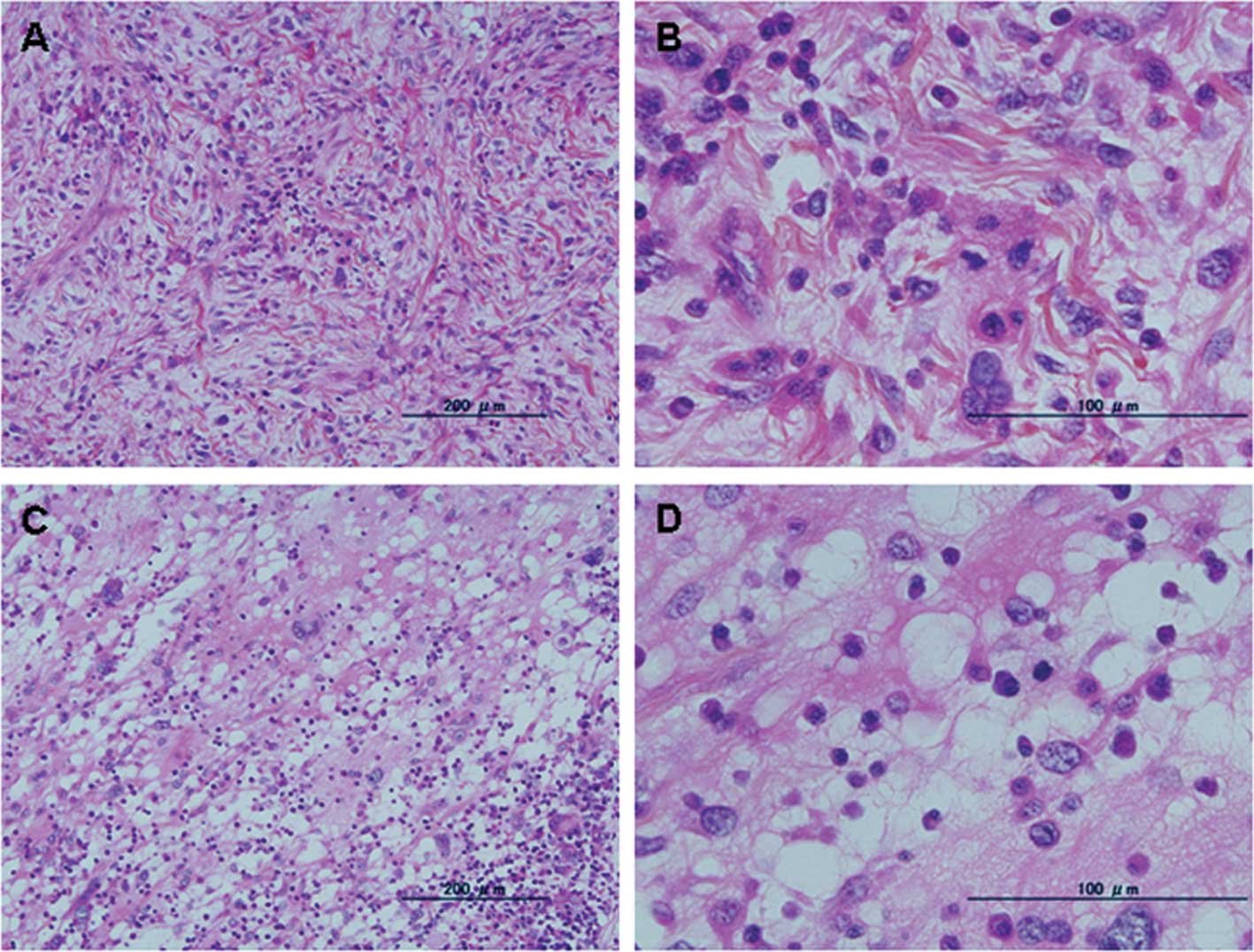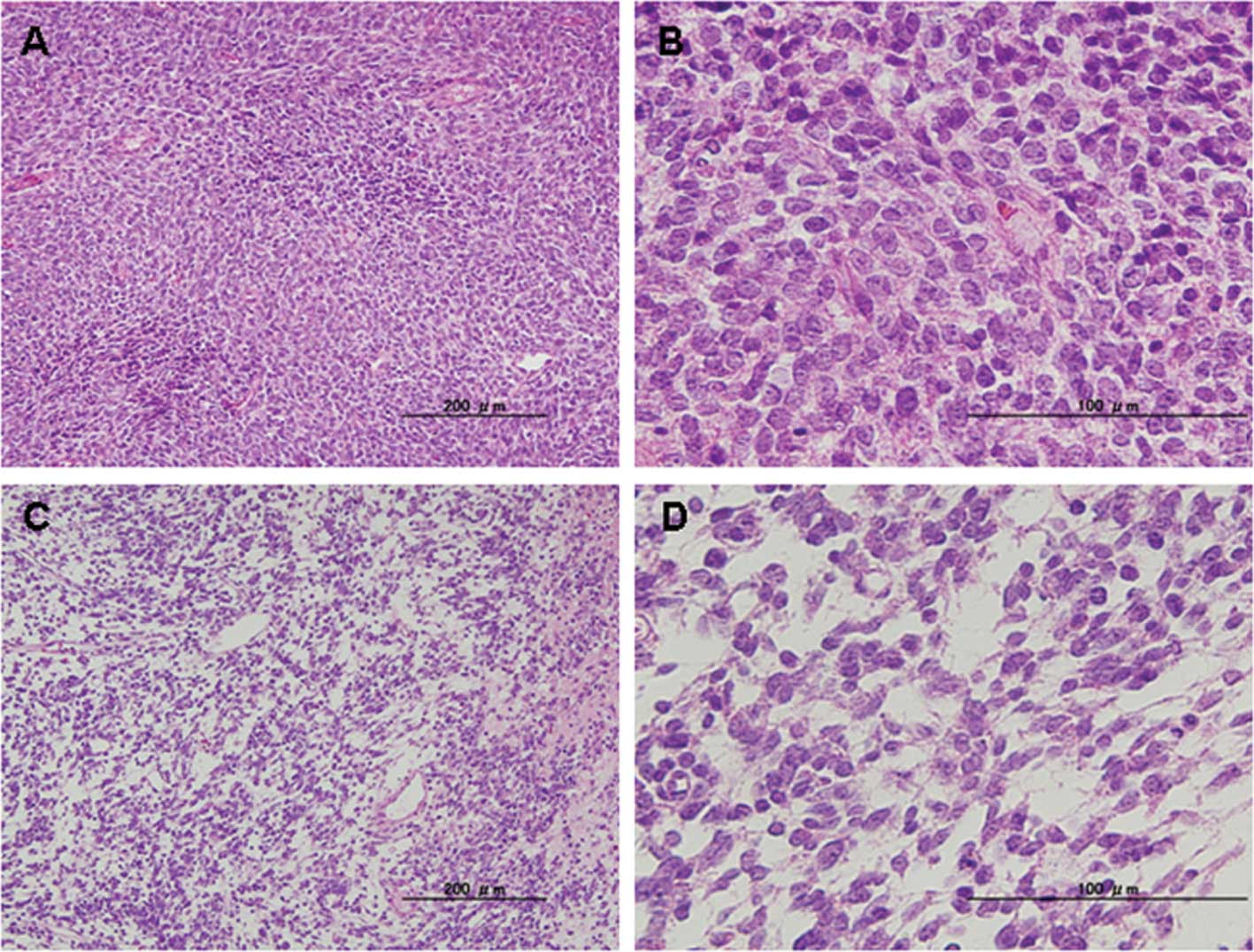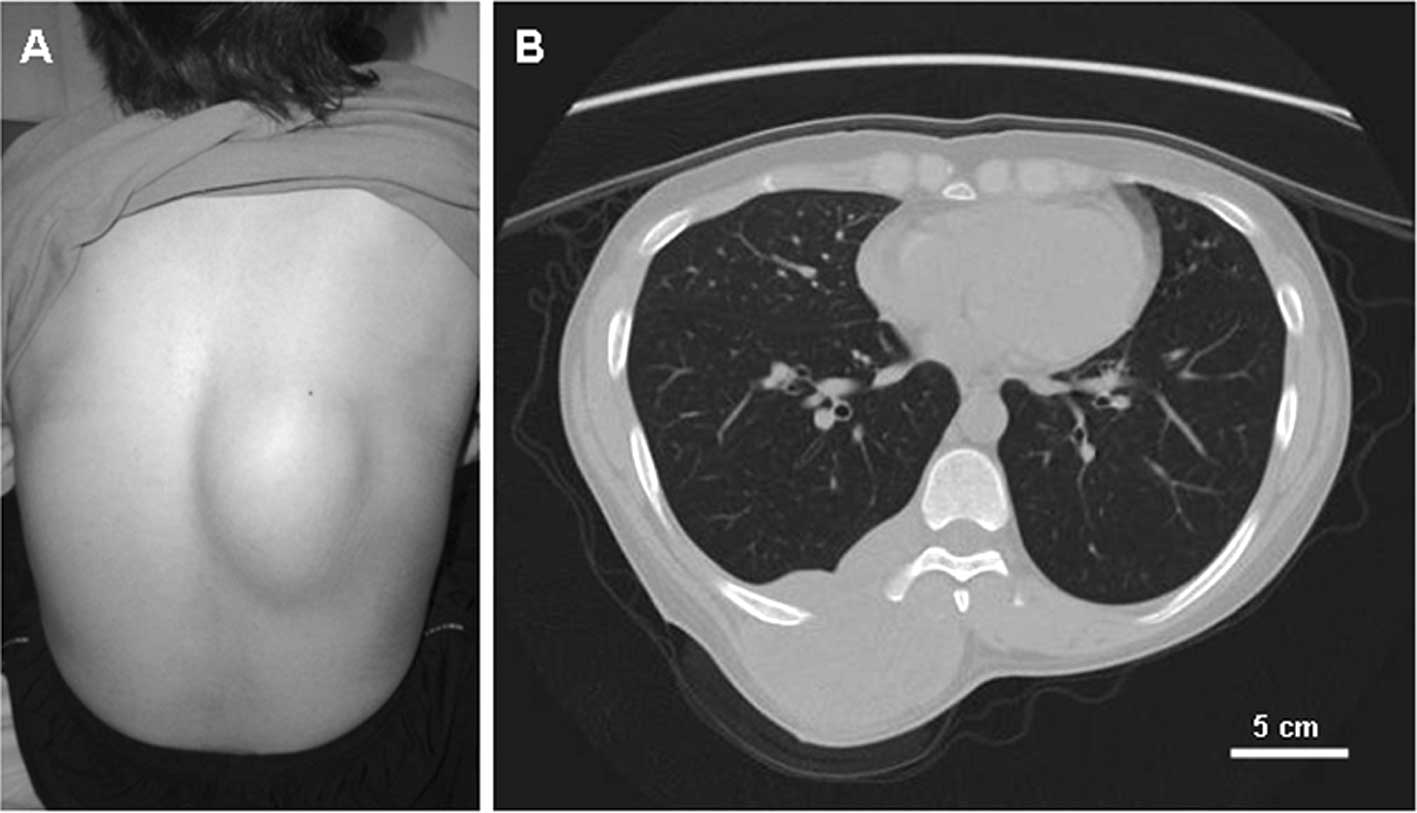|
1
|
Weiss SW and Goldblum JR: Liposarcoma.
Enzinger and Weiss's Soft Tissue Tumors. 4th edition. Mosby; St.
Louis: pp. 641–93. 2001
|
|
2
|
Antonescu CR and Ladanyi M: Myxoid
liposarcoma. World Health Organization Classification of Tumours:
Pathology and Genetics of Tumours of Soft Tissue and Bone. Fletcher
CDM, Unni KK and Mertens F: IARC Press; Lyon: pp. 40–43. 2002
|
|
3
|
Antonescu CR, Elahi A, Humphrey M, Lui MY,
Healey JH, Brennan MF, Woodruff JM, Jhanwar SC and Ladanyi M:
Specificity of TLS-CHOP rearrangement for classic myxoid/
round cell liposarcoma: absence in predominantly myxoid
well-differentiated liposarcomas. J Mol Diagn. 2:132–138. 2000.
|
|
4
|
Panagopoulos I, Mertens F, Isaksson M and
Mandahl N: A novel FUS/CHOP chimera in myxoid
liposarcoma. Biochem Biophys Res Commun. 279:838–845.
2000.PubMed/NCBI
|
|
5
|
Antonescu CR, Tschernyavsky SJ, Decuseara
R, Leung DH, Woodruff JM, Brennan MF, Bridge JA, Neff JR, Goldblum
JR and Ladanyi M: Prognostic impact of P53 status, TLS-CHOP
fusion transcript structure, and histological grade in myxoid
liposarcoma: a molecular and clinicopathologic study of 82 cases.
Clin Cancer Res. 7:3977–3987. 2001.PubMed/NCBI
|
|
6
|
Hosaka T, Nakashima Y, Kusuzaki K, Murata
H, Nakayama T, Nakamata T, Aoyama T, Okamoto T, Nishijo K, Araki N,
et al: A novel type of EWS-CHOP fusion gene in two cases of
myxoid liposarcoma. J Mol Diagn. 4:164–171. 2002.
|
|
7
|
Domoto H, Hosaka T, Oikawa K, Ohbayashi T,
Ishida T, Izumi M, Iwaya K, Toguchida J, Kuroda M and Mukai K:
TLS-CHOP target gene DOL54 expression in liposarcomas
and malignant fibrous histiocytomas. Pathol Int. 52:497–500. 2002.
View Article : Google Scholar
|
|
8
|
Bode-Lesniewska B, Frigerio S, Exner U,
Abdou MT, Moch H and Zimmermann DR: Relevance of translocation type
in myxoid liposarcoma and identification of a novel
EWSR1-DDIT3 fusion. Genes Chromosomes Cancer. 46:961–971.
2007. View Article : Google Scholar : PubMed/NCBI
|
|
9
|
Alaggio R, Coffin CM, Weiss SW, Bridge JA,
Issakov J, Oliveira AM and Folpe AL: Liposarcomas in young
patients: a study of 82 cases occurring in patients younger than 22
years of age. Am J Surg Pathol. 33:645–658. 2009.PubMed/NCBI
|
|
10
|
Kubo T, Matsui Y, Naka N, Araki N, Myoui
A, Endo K, Yasui N, Ohtani O, Suzuki K, Kimura T, Yoshikawa H and
Ueda T: Specificity of fusion genes in adipocytic tumors.
Anticancer Res. 30:661–664. 2010.PubMed/NCBI
|
|
11
|
Matsui Y, Ueda T, Kubo T, Hasegawa T,
Tomita Y, Okamoto M, Myoui A, Kakunaga S, Yasui N and Yoshikawa H:
A novel type of EWS-CHOP fusion gene in myxoid liposarcoma.
Biochem Biophys Res Commun. 348:437–440. 2006.PubMed/NCBI
|
|
12
|
Suzuki K, Matsui Y, Endo K, Kubo T,
Hasegawa T, Kimura T, Ohtani O and Yasui N: Myxoid liposarcoma with
EWS-CHOP type 1 fusion gene. Anticancer Res. 30:4679–4684.
2010.
|
|
13
|
Ladanyi M, Antonescu CR, Leung DH,
Woodruff JM, Kawai A, Healey JH, Brennan MF, Bridge JA, Neff JR,
Barr FG, et al: Impact of SYT-SSX fusion type on the
clinical behavior of synovial sarcoma: a multi-institutional
retrospective study of 243 patients. Cancer Res. 62:135–140.
2002.
|
|
14
|
De Vreeze RSA, De Jong D, Koops W,
Nederlof PM, Ariaens A, Haas RL and van Coevorden F: Oncogenesis
and classification of mixed-type liposarcoma: a radiological,
histopathological and molecular biological analysis. Int J Cancer.
128:778–786. 2011.PubMed/NCBI
|

















